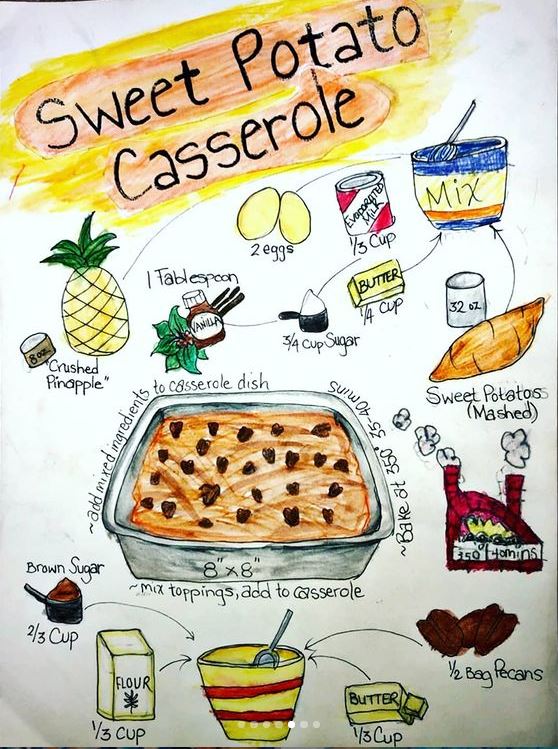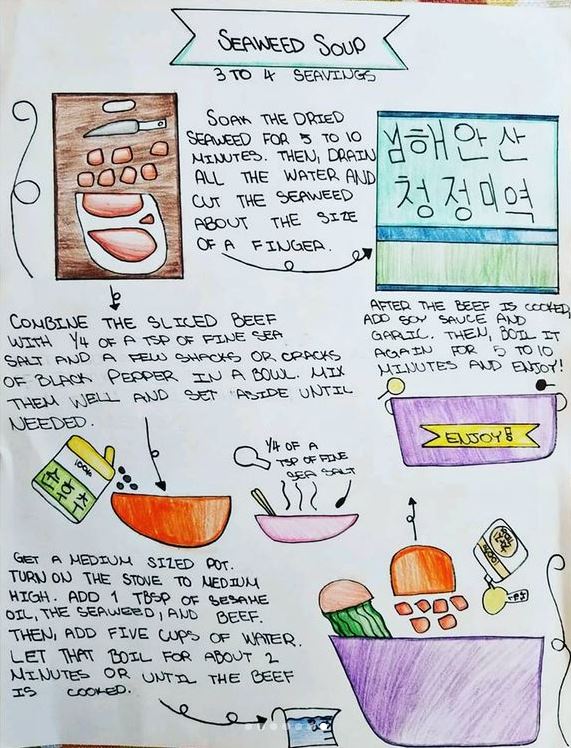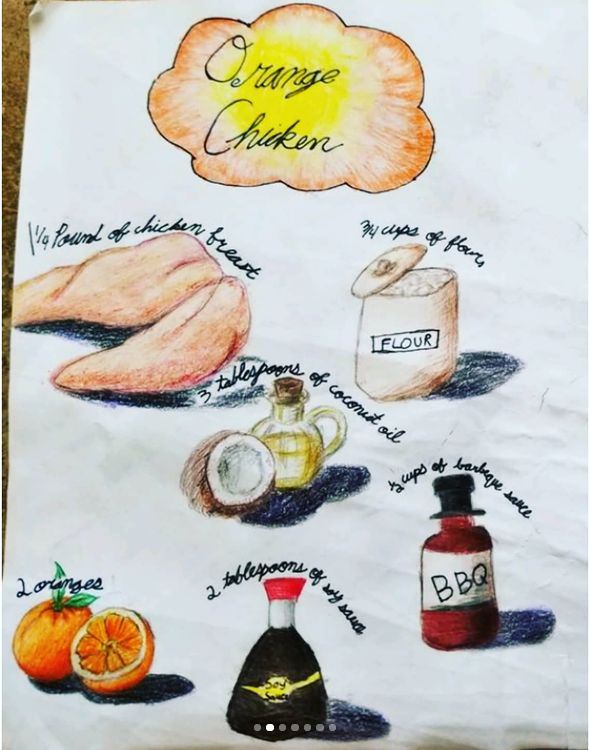Objectives:
- Study Wayne Thiebaud and other artists the choose food as their main subject
- Choose a food or meal that has personal significance
- Collect photo references
- Choose a color scheme for artwork
- Create a food artwork focusing on color and value with light and shadows for realism
- Choose a food or meal that has personal significance
- Collect photo references
- Choose a color scheme for artwork
- Create a food artwork focusing on color and value with light and shadows for realism
Materials:
- Photo references
- Drawing paper
- Pencils
- Coloring supplies (colored pencils, oil pastels, crayons, etc...)
- Drawing paper
- Pencils
- Coloring supplies (colored pencils, oil pastels, crayons, etc...)
Arts Integration:
CULTURE
Through the study of culture and cultural diversity, learners understand how human beings create, learn, share, and adapt to culture, and appreciate the role of culture in shaping their lives and society, as well the lives and societies of others. In schools, this theme typically appears in units and courses dealing with geography, history, sociology, and anthropology, as well as multicultural topics across the curriculum.
Through the study of culture and cultural diversity, learners understand how human beings create, learn, share, and adapt to culture, and appreciate the role of culture in shaping their lives and society, as well the lives and societies of others. In schools, this theme typically appears in units and courses dealing with geography, history, sociology, and anthropology, as well as multicultural topics across the curriculum.
Color Theory:
Warm: red, red-orange, orange, yellow-orange, yellow, yellow-green
Seem to move forward in a design, make shapes/forms appear larger
Cool: green, blue-green, blue, blue-violet, violet, red-violet
Seem to move backward in a design; make shapes/forms appear smaller
Neutral: having no easily seen hue – white, gray, black
Shade: a darker value of a hue; made by adding black or a darker complementary color to the original hue
Ex: maroon is a shade of red
Tint: a light value of a hue; made by adding white to the original hue
Ex: pink is a tint of red
Tone: a less intense value of a hue; made by adding gray (black + white) to the original hue
Pigment: the coloring material used to make painting/drawing materials, dyes, and inks;
Seem to move forward in a design, make shapes/forms appear larger
Cool: green, blue-green, blue, blue-violet, violet, red-violet
Seem to move backward in a design; make shapes/forms appear smaller
Neutral: having no easily seen hue – white, gray, black
Shade: a darker value of a hue; made by adding black or a darker complementary color to the original hue
Ex: maroon is a shade of red
Tint: a light value of a hue; made by adding white to the original hue
Ex: pink is a tint of red
Tone: a less intense value of a hue; made by adding gray (black + white) to the original hue
Pigment: the coloring material used to make painting/drawing materials, dyes, and inks;
- Natural – made from earth or plants
- Synthetic – laboratory-prepared, made from chemicals
Your browser does not support viewing this document. Click here to download the document.
Your browser does not support viewing this document. Click here to download the document.
|
| ||||||||||||||||||||||||
Wayne Thiebaud
Your browser does not support viewing this document. Click here to download the document.
Who is Wayne Thiebaud?
- Wayne Thiebaud was born in 1920 in Mesa, Arizona. He moved with his family to Long Beach, California, at age nine.
- Thiebaud grew up during the Great Depression. He was a boy scout and worked in restaurants.
- In high school, he played basketball. He took art classes and started drawing cartoons. He also worked on stage sets for theater productions. Perhaps this experience with stage lighting gave him the idea to put bright light in his paintings.
- As a teenager Thiebaud held several jobs, making posters for a movie theater and painting signs. One summer Thiebaud worked in the animation department at Walt Disney Studios. He drew the "in-between frames" (drawings positioned between key changes in movement in order to make animation play smooth) for such cartoons as Goofy and Pinocchio.
- In the 1940s, Thiebaud went to junior college and then served in the Army as an artist and cartoonist. He married and settled in Los Angeles and worked as a commercial artist and illustrator. At age twenty-nine he went back to college and received degrees in art, art history, and education. He began teaching art to college students and decided to become a serious painter himself.
- In 1961, Thiebaud's food paintings—images of cakes, pies, candy, gumball machines, and deli counters painted with thick paint in bright colors—were exhibited in New York. They were a big hit! Though some scholars called Thiebaud a Pop artist because he painted popular consumer goods, he said he painted them out of nostalgia; they reminded him of his boyhood and the best of America.
- Thiebaud explained:
"My subject matter was a genuine sort of experience that came out of my life, particularly the American world in which I was privileged to be . . . . I would really think of the bakery counters, of the way the counter was lit, where the pies were placed, but I wanted just a piece of the experience. From when I worked in restaurants . . . [it was] always poetic to me." - Thiebaud painted things other than food. He made still lifes of neckties, eyeglasses, lipsticks, even cows and dogs. He also painted large portraits of human figures, applying thick paint in bright colors against stark white backgrounds.
- 9. Thiebaud went on to paint cityscapes—from the steep hills of San Francisco to the colorful landscapes of the Sacramento Valley in California.
- 10. Wayne Thiebaud retired from full-time teaching in 1990. He lives in Northern California and continues to paint.












